The £5995 Leema Acoustics Libra is both a DAC and a preamplifier with a plethora of inputs that should be ample for anyone. Dominic Marsh gets to grips with it for Hifi Pig.
Back in June of 2015 I reviewed the Leema Elements integrated amplifier for Hifi Pig and I clearly recall giving that particular component a “Recommended” award. I liked the ease of setup and the sound quality, plus the connectivity with plenty of useful inputs to choose from.
DACs used to be DACs and preamplifiers were pre-amplifiers at one time, but increasingly we are seeing DACs with albeit rather primitive volume controls and amplifiers with built-in DACs, so their identities are blurring into one and Leema have taken that concept one small step further by combining a top class DAC with a top class pre-amplifier only, rather than a full integrated amplifier.
DESIGN AND CONSTRUCTION
How very astute of Leema to house the Libra in a chassis already being used in their top of the range amplifiers. You get an automatic visual match of course with other Leema components wearing its shade of silver/grey coat, but there is a visual clash when you introduce it into a non-Leema system. I don’t get too fussed over colour matching whatever is in my rack, be it coloured silver, chrome, black, or green with purple stripes for that matter, but I harbour no discord with others that do require a perfect visual match.
The front panel layout is pretty simple and uncomplicated. To the left is a headphone 3.5mm mini stereo jack socket, beneath which is an MP3 input 3.5mm mini stereo jack. To the right of that pair is a large rotary volume control, beneath which is a home theatre bypass push button and a push button muting switch. To the centre of the front panel is a blue LCD display which shows the input selected and the volume level, plus the various menu options available, selected by a combination of a rotary control to the right of the display and two other push buttons for engaging menu selections. Sounds complicated but in reality is very easy to master because all the menu options are simple, concise and unambiguous.
Now if the Elements integrated amplifier impressed me with its plentiful amount of inputs, then little did that prepare me for the number present with the Libra DAC/Preamplifier. A quick count gave no less than 14 digital and analogue input connections, not including the partnered XLR balanced inputs with matching single ended RCA input sets, which brings the total to 17 if we are going to be pernickety about it. Add on top of that the Leema “LIPS” (Leema Intelligent Protocol System) communication system input/output connections which allows the Libra to communicate directly with other Leema components and there isn’t much empty space left on that rear panel to add anything else apart from a mains input. To table them out, we have 3 TOSLINK digital input sockets, 3 RCA digital inputs, a USB “B” connector input, followed with 2 AES/EBU XLR sockets, then for good measure a pair of I2S inputs. We then see 3 analogue input pairs labelled 1, 2, and 3 consisting of a pair of single ended RCA phono sockets and a pair of balanced XLR connectors, with a push switch to enable either single ended or balanced operation. If that wasn’t enough, then the DAC is Bluetooth equipped to wirelessly connect with tablet computers and mobile smart phones. PHEW!
The digital decoding circuitry isn’t centred around an off the shelf standard DAC chipset, so instead Leema have decided on a circuit called “Quattro Infinity” which effectively makes the entire circuit fully balanced in the pursuit of low noise and signal integrity. How the circuit achieves this is a mystery to me and concerns me not at all I might add. It also houses a Cirrus Logic CS4392 DAC chip to allow for DSD streams to be decoded, plus Leema’s own M1 USB interface.
The Libra is supplied with a full function remote control handset.
SOUND
Because the Libra is both a DAC and a pre-amplifier, my evaluation routine was split into three parts, namely as a standalone DAC, then the pre-amplifier in it’s own right and of course I evaluated them as the combined pair, so I first began with the DAC section.
After having been relieved of a figure close to £6,000 you would expect there to be a quantum leap in sound quality from the very start, but if that is your expectation of this component, it simply doesn’t behave that way. It isn’t lacklustre by any means, but by the same token it doesn’t grab you instantly either with a beautifully rendered fireworks display sound palette that spreads all before you that you can quaff copiously. No sir. It deserves your close attention and beguiles you by stealth almost, because it provides an endless stream of surprises dug out of recordings you have probably heard many times, over many years in fact and intimately familiar with – or so you thought. This DAC is all about the details, consistently so and from that statement you would think I had my ears cranked up to full speed, my mind closely attuned to the music and listening intently, making almost hard work out of listening, but not so. I never once found it fatiguing or having it forcing me into making an effort to concentrate because the music just rolled forth without any strain or stress in an almost matter-of-fact manner. The highs were high, the lows were low, the midband liquid and sweet, imaging was very good rather than exceptional and the noise floor was absolutely silent. And that for me personally was its undoing, oddly enough. While the presentation was controlled, precise and dare I say accurate, it didn’t hit me at any time emotionally. It lacked the zing and pizzazz I crave from whatever component I own or indeed review for that matter that makes it memorable. You could of course argue that my personal tastes stray away from strict accuracy and true fidelity, but having reviewed components that were relentlessly accurate and by their nature highly fatiguing, or being given the choice of mildly coloured to connect with the emotions, then give me the latter every time and if we are to be brutally honest I believe I am not alone in this train of thought. That is irrelevant though in the context of this review and my own personal tastes should have no bearing at all in my findings for this review.
My favourite test CD of the moment is Fink’s “Wheels Beneath My Feet” album recorded live in various venues during one of Fink’s many European tours. The track “Sort of Revolution” has some powerful Floor Tom whacks and pounding kick drum beats from the drummer and the Libra DAC certainly did put the weight and power behind them so they were felt as well as heard. This same album has some well recorded venue ambience which changes at each location and of real note is the drum kit cymbals and Snare Drum which shine with startling realism, giving that crisp metallic ring from the cymbals and a solid ‘crack’ from the snare drum rim shots. Fink’s lyrics writing and indeed diction is terrible when he sings and for reasons I still cannot comprehend, this album is rarely out of my CD player. With the Libra DAC however, a wealth of additional details were being revealed and I had to play several excerpts again and again to make sure I wasn’t hearing things that weren’t actually there to be heard. And I hadn’t.
The opening track in London Grammar’s excellent ‘If You Wait’ album there is a wealth of synthesized reverberation effects and a deep penetrating bass line to the music, underpinning the female vocals. The Libra portrayed this track with both the delicacy and power necessary to make it an enjoyable and satisfying listen. Track two from the same album contains some very obvious and deliberate fret fingering on steel strings from the guitarist and that comes across as crisp, defined and uncannily real sounding. The whole album is infused with artificial ambience and the Libra rendered this perfectly.
Ginger Baker’s epic drum solo on ‘Wheels of Fire’ by Cream has the drum kit close mic’d during the performance which is ideal for testing transient ability. Snare drum and tom toms sounded less taut and slightly less dynamic than from other DACS I have heard lately, yet the cymbals had a polished refinement with no splashiness or tizz. Kick drum too had a less than solid “whump” which ought to feel like it’s hitting you in the pit of the stomach as much as you hear it with your ears, but the Libra softened the effect slightly.
Moving on to Derrin Nauendorf’s ‘Live at the Boardwalk’ which is a live acoustic recording with Derrin playing solo acoustic guitar and accompanied only by a basic set of drums, the tonality of the guitar’s sound was conveyed realistically and full of natural resonances and timbres. Every pluck on the strings was heard in great clarity and detail, although I cannot say that Derrin is the best of vocalists, but an enjoyable listen nonetheless.
I then put the pre-amp section through its paces and once again I found it to be very good rather than exceptional and that is a high accolade on its own, as it equaled my resident pre-amp in terms of clarity, detail and substance. The Leema Libra though still had an ace up its sleeve as my resident pre-amp has a clear sonic difference between the single ended and balanced connection, the latter sounding much better than the former. The Libra sounded equally as good no matter which input type was selected, which is highly commendable.
Finally then, I used the Leema Libra as the intended DAC/Pre combination to drive my resident power amplifier, which is a 150 watts per channel unit of American origin, with some major upgrades made a few years back for a more incisive and dynamic sound than the stock unit which was a tad too ‘warm’ and laid back for my tastes. The Libra unit had no problem at all driving my power amp to some seriously high volume level and the volume control in the Libra was about as linear perfect as I could wish for with no sudden rise in level as the control knob was rotated. Even then, the Libra couldn’t peak that crest of getting me drawn ever closer on an emotional level. It certainly wasn’t bland or indeed sterile by any means because there was a wealth of details and nuances to be heard and enjoyed, but it didn’t demonstrate the elusive “Factor X” that keeps you listening way past your normal bed time and feeling emotionally satiated as you power the system down for the night. I suspect this is the result of Leema’s pursuit of neutrality in the overall sound which I feel they have mostly achieved, but perhaps they were a little too diligent in that pursuit.
CONCLUSION
Let me say here that I don’t relish or enjoy picking holes in any product submitted to me for review. If I glossed these over or buried these findings (Especially at this price level) then the value of my reviews drops to zero and has no merit whatsoever to a prospective purchaser. On the other hand though, it might be EXACTLY what you are seeking from your next audition or purchase and you might not be paying too much notice to what criticisms I may have leveled at the Leema Libra and your own perceptions could be at total variance with mine, even more so with other partnering system components different to mine, so let’s sum up this review on the positive aspects of this product.
If you cannot connect up the Libra DAC/Pre into your system then I would be truly amazed at that. It would certainly meet all of my current connection needs and then some for whatever the future holds in store. Best of all is all the inputs have a high quality sound – even via the Bluetooth connection and the headphone amplifier is of very good quality too. The use of balanced topology in the majority of the circuitry (including the digital stages) shows a lot of careful thought has gone into the design.
It is a complex product and to some it might be daunting, but be assured Leema has gone to great pains to ensure setting up the Libra is simple – even I managed it without any stress or hassle.
There is a lot of digital (and analogue) hardware in that casework and geared for 44.1kHz native CD replay, USB asynchronous digital signal and DSD stream up to DSD 128 standard, DXD, 24 bit 384kHz through the I2S connection and it’s about as “future proof” as is possible at this moment in time.
A DIFFERENT PERSPECTIVE FROM 2021 AND HIFI PIG’S EDITOR, STU
Build Quality: The case is as substantial and robust as the proverbial outhouse and the controls are well laid out and labelled well. The display is somewhat crude but does the job intended.
Sound Quality: Plenty of power, detail and nuances to the sound, although lacking involvement and emotional connection. It isn’t bland or sterile by any means.
Value For Money: With a price tag of £5,995.00 this unit isn’t cheap, but it’s about as “future proof” as humanly possible, so it would probably be a long term ownership.
Pros:
Fine build, plethora of digital and analogue inputs
Detailed and powerful sound
Cons:
Perhaps a bit too much neutral sounding
Price:
£5,995.00
Dominic Marsh
Specifications
Analogue Inputs: 3 (configurable as Balanced or Un-Balanced)
Bluetooth interface: Yes
Headphone Amplifier: Yes (high quality)
S/PDIF Coaxial Inputs: 3 (24 bit 192kHz & DSD64)
S/PDIF Optical Inputs: 3 (24 bit 192kHz & DSD64)
I2S Inputs: 2 via RJ45 connectors (24 bit 384kHz, DXD, DSD64 & DSD128)
One I2S Input has fully programmable pin allocation
AES/EBU Inputs: 2 via XLR connectors (24 bit 192kHz & DSD64)
Asynchronous USB: Yes (24 bit 384kHz, DXD, DSD64 & DSD128)
USB: Yes (fully asynchronous – Windows & Macintosh)
USB Isolation: Full Galvanic
Dimensions: 440*320*110mm (WxDxH)
Weight: 15Kg




























































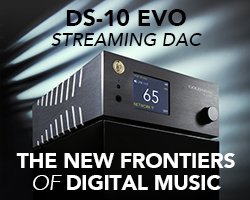
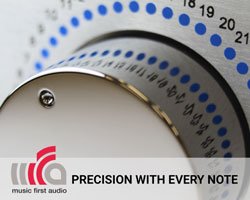

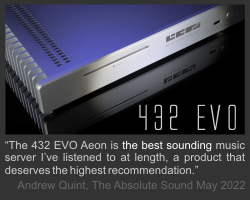





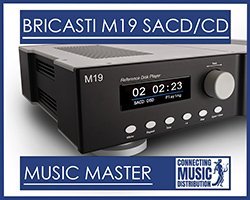




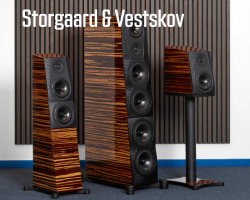
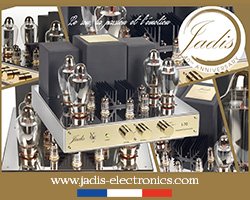






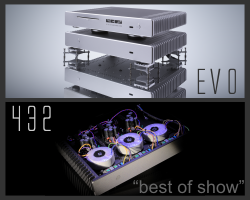













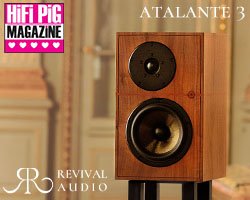
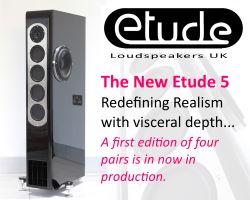


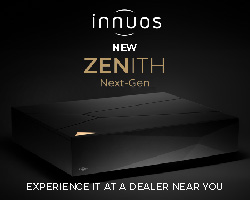






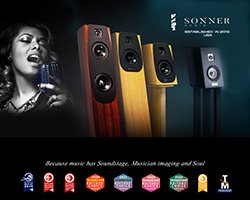



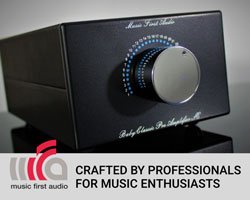

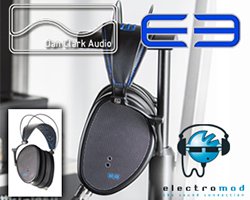




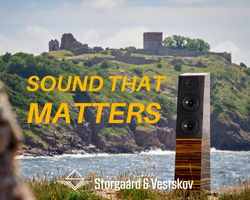



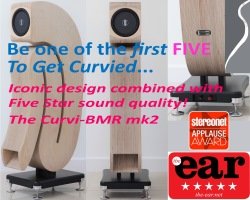













































You must be logged in to leave a reply.